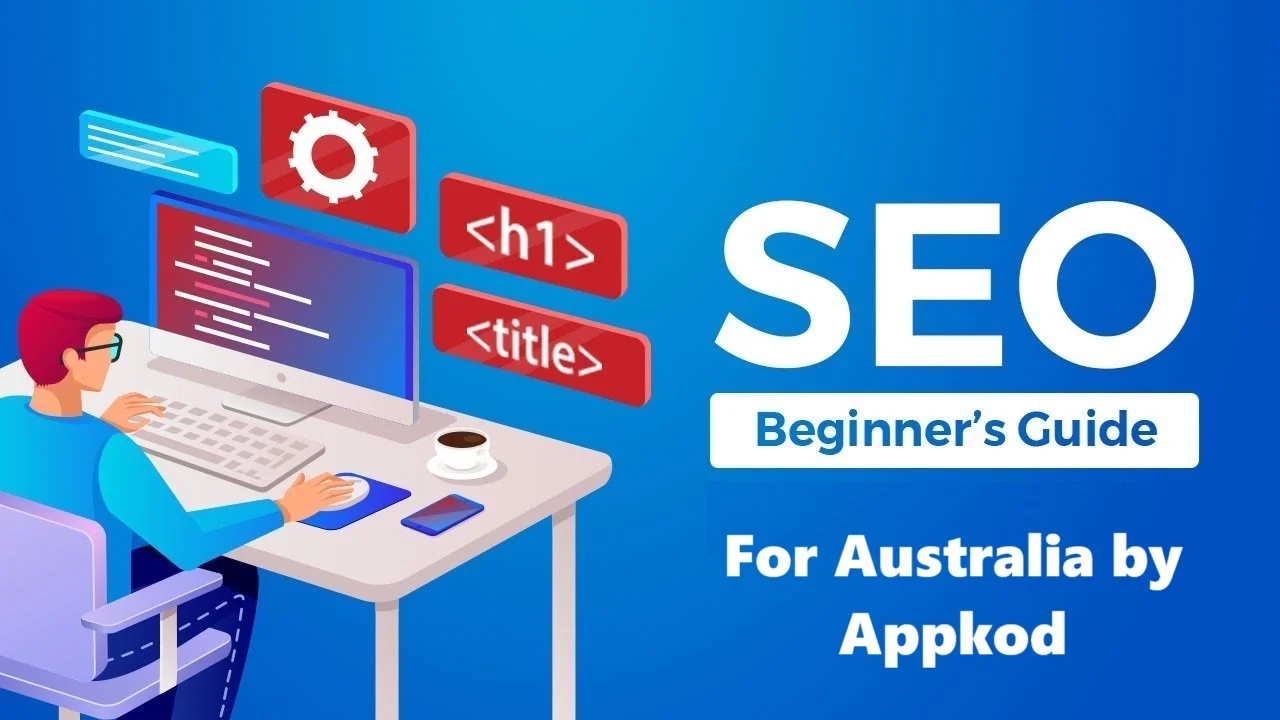Welcome to Appkod’s comprehensive SEO guide for Australian startups and local businesses. Whether you’re just starting or looking to enhance your online presence, this guide will provide the fundamental principles and actionable strategies to help your business thrive in the digital landscape.
1. Understanding SEO
What is SEO?
Search Engine Optimization (SEO) involves improving the quality and quantity of website traffic through organic search results. It involves optimizing your website to rank higher in search engine results pages (SERPs).
Why is SEO Important for Australian Businesses?
SEO is crucial in increasing your online visibility, driving targeted traffic, and boosting your sales and revenue. For Australian businesses, local SEO ensures you reach customers in your area, enhancing your chances of converting local visitors into loyal customers.
2. Keyword Research
Identifying the Right Keywords
Effective SEO starts with identifying the keywords your target audience uses to search for products or services related to your business. Tools like Google Keyword Planner, Ahrefs, and SEMrush can help you find relevant keywords with high search volume and low competition.
Long-Tail Keywords
Long-tail keywords are longer, more specific phrases that visitors are more likely to use when they’re closer to making a purchase or using voice search. These keywords may have lower search volumes but often yield higher conversion rates.
3. On-Page SEO
Title Tags and Meta Descriptions
Title tags and meta descriptions are crucial elements of on-page SEO. Ensure your title tags are compelling, include your primary keyword, and are within 60 characters. Meta descriptions should be concise, informative, and around 150-160 characters.
Heading Tags
Structure your content using heading tags (H1, H2, H3, etc.). The H1 tag should contain your primary keyword and clearly define the page’s topic. Subheadings (H2, H3) should break down content into manageable sections.
Content Optimization
Create high-quality, valuable content that answers your audience’s questions and solves their problems. Include your primary and secondary keywords naturally throughout the content, ensuring it reads well and provides genuine value.
Image Optimization
Optimize your images by using descriptive filenames, alt text, and captions. This not only improves accessibility but also helps search engines understand the context of your images.
4. Technical SEO
Mobile-Friendly Design
Ensure your website is mobile-friendly, as Google uses mobile-first indexing. Use responsive design to provide a seamless experience across all devices.
Site Speed
Page load speed is a critical ranking factor. Use tools like Google PageSpeed Insights to analyze your site’s performance and implement recommendations to improve load times.
Secure Website
Having a secure HTTPS website is essential for both user trust and SEO. Ensure your site has an SSL certificate to protect user data.
5. Local SEO
Google My Business
Claim and optimize your Google My Business (GMB) listing. Ensure your business name, address, and phone number (NAP) are consistent across all online platforms. Encourage satisfied customers to leave positive reviews on your GMB profile.
Local Citations
Build local citations by listing your business in relevant Australian directories such as Yellow Pages, True Local, and Hotfrog. Consistency in NAP details across these listings is vital.
Localized Content
Create content that caters to your local audience. This could include blog posts about local events, news, or topics relevant to your community. Use local keywords and phrases to enhance your local search visibility.
6. Link Building
Quality Backlinks
Earn high-quality backlinks from reputable websites in your industry. This can be achieved through guest blogging, partnerships, or creating shareable content others want to link to.
Internal Linking
Use internal links to guide visitors to other relevant pages on your site. This helps distribute page authority and improves site navigation, making it easier for search engines to crawl your site.
7. Monitoring and Analytics
Google Analytics
Set up Google Analytics to track your website’s performance. Monitor key metrics such as organic traffic, bounce rate, and conversion rates to assess the effectiveness of your SEO efforts.
Google Search Console
Use Google Search Console to monitor your site’s health, submit sitemaps, and identify issues such as broken links or crawl errors. This tool provides valuable insights into how Google views your site.
Conclusion
SEO is an ongoing process that requires consistent effort and adaptation. By following the strategies outlined in this guide, you’ll be well on your way to improving your website’s visibility and driving targeted traffic to your business. Start implementing these practices today and watch your online presence grow.
Need personalized assistance? Contact Appkod’s SEO experts for a free consultation and take your business to the next level.






